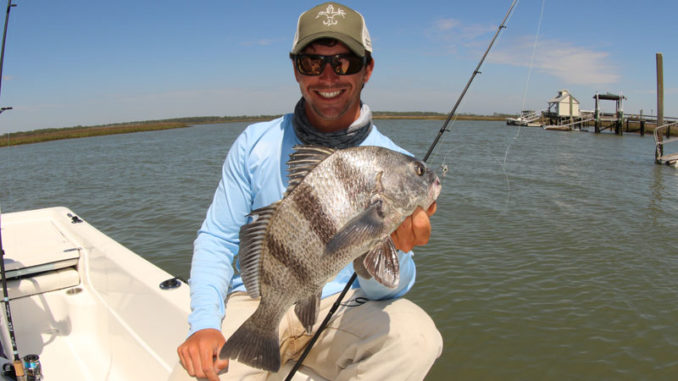
January’s weather offers challenges, but it can offer stellar fishing too
January brings the some of the coldest weather of the year to the Carolinas. But that doesn’t mean anglers should stow their fishing gear away. In most years, both states experience numerous, unseasonably warm days that can make fishing productive and enjoyable.
Even on bitterly cold days, many anglers can find a handful of fish to make a trip to the water worth it. But those warm spells can turn into the stuff of which angling dreams are made.
When compared to other parts of the country, the Carolinas’ weather in January is actually quite pleasant, on the average. Along the coasts especially, the average highs range from 51 to 61 degrees, and the average lows run between 38 and 48. These aren’t the worst of fishing conditions. However, inshore water temperatures drop considerably, slowing down fish metabolisms.
Of course, fish have to eat. But during cold spells, they eat far less than most people realize. One reason the fall bite is so good is that these same fish know they need to pack on the mass to carry them through the winter. Instead of eating the same amount of food, their bodies transform that mass into energy to get them through until spring weather arrives. So on an average January day, the average inshore fishermen will generally struggle to catch his fill.
The warm watch
Luckily, weather patterns usually bring some 70-plus degree days to our coasts — and some days are considerably warmer than that. During these warming trends, anglers can experience unforgettable fishing trips — even better than they’ll have on spring days with the exact same temperatures.
One of the main reasons these days can be so good is because the fish are going to swarm to the warmest water close to them to chase the baitfish that are doing the same thing. These areas are small. So while fish can be just about anywhere in spring, in January, they are much easier to find. The shallow spots in creeks and inlets become hotbeds of activity as the fish move in to warm their bodies, creating the need for them to feed more than normal for the winter.
Live bait is much more scarce this time of year than any other. But some baitfish are inshore, and a cast net or a well-placed minnow trap can provide you with more than enough. Using them under a cork is about as good as it gets. Artificial suspending lures fished slowly can also be deadly, and even topwater lures can draw a strike or two on exceptionally warm days.
Think about the areas you generally fish in the spring, summer and fall. Those areas you concentrate on during the rising to high tide are where you want to spend most of your time in January. They warm up the quickest and stay the warmest thanks to their shallow natures.
And as the tide falls out, stay focused on areas with enough water to cover the fish, but not the deeper holes you look for in summer. The areas in between those are usually the most productive this time of year.
Fish structure
Fishing around docks, bridge pilings and submerged debris is also a good tactic in January. Those structures suck up the sun’s heat, and that heat transfers into the water, attracting baitfish and gamefish. During low stages of the tide, when the shallows are high and dry, many fish retreat to these types of structure. And they can be anywhere in the water column, depending on how much heat is transferred through their preferred structure. So stay flexible.
Live bait fished at different depths can tell the tale around these structures. And experimenting with artificial lures that run at different depths is also a good bet. Don’t be afraid to try working your lures a little faster at times, but abandon that tactic if it’s not producing bites.
The water is generally clear in January. Keep that in mind when approaching areas you think are holding fish. Keep your distance, make long casts and stick with smaller lures and whatever natural bait you find. Many anglers also prefer fluorocarbon leaders.
Even on the warmest days this month, you’ll find far fewer people on the water. This allows you to fish more areas with less competition. So once you get your fill from one hole, it’s a good idea to move on in search of another one. Your time is limited this month, so make the most of it.




Be the first to comment